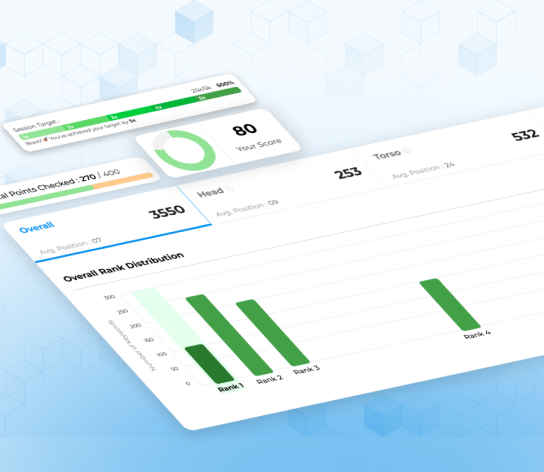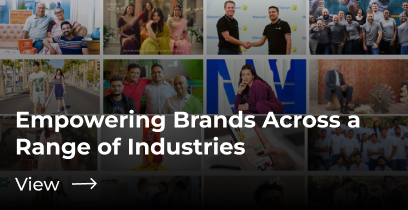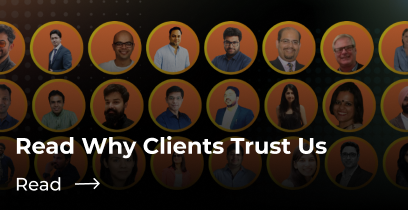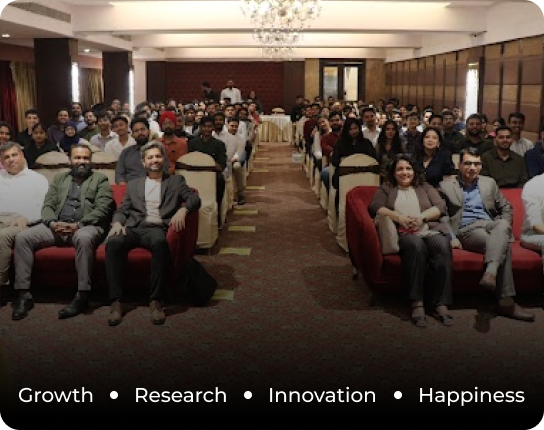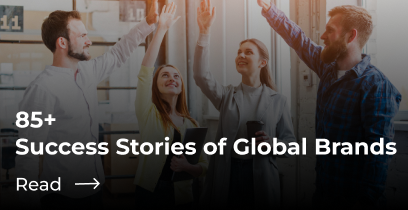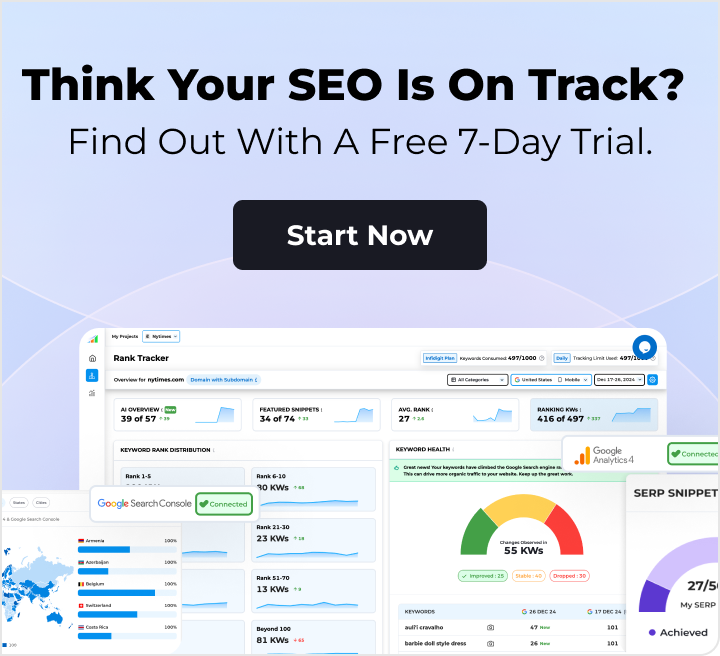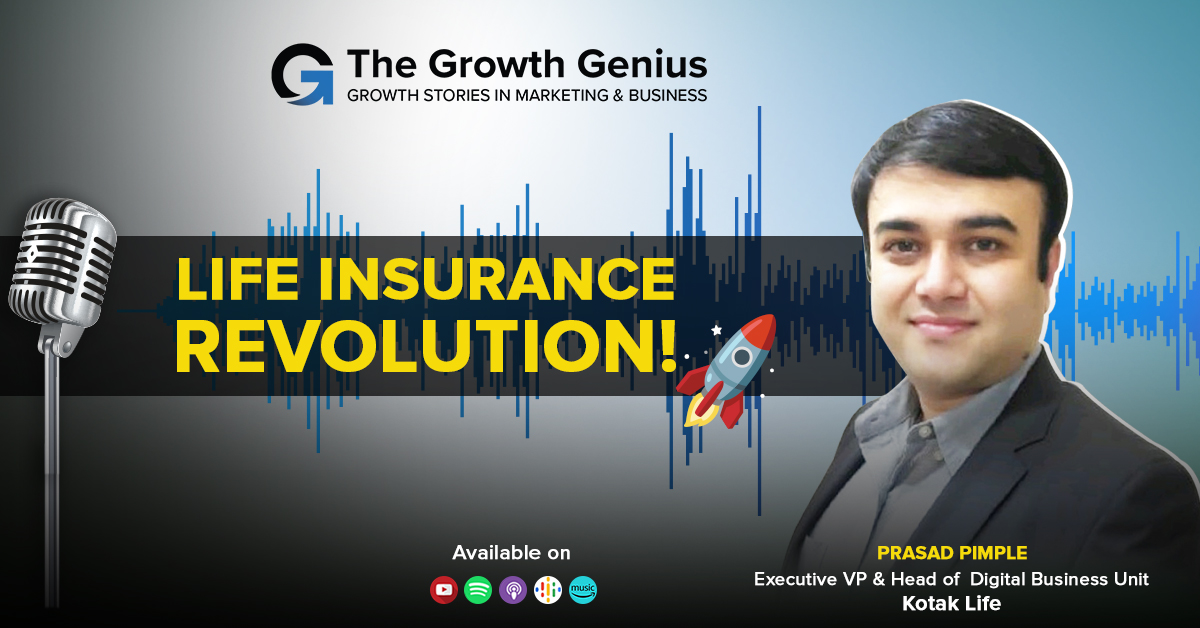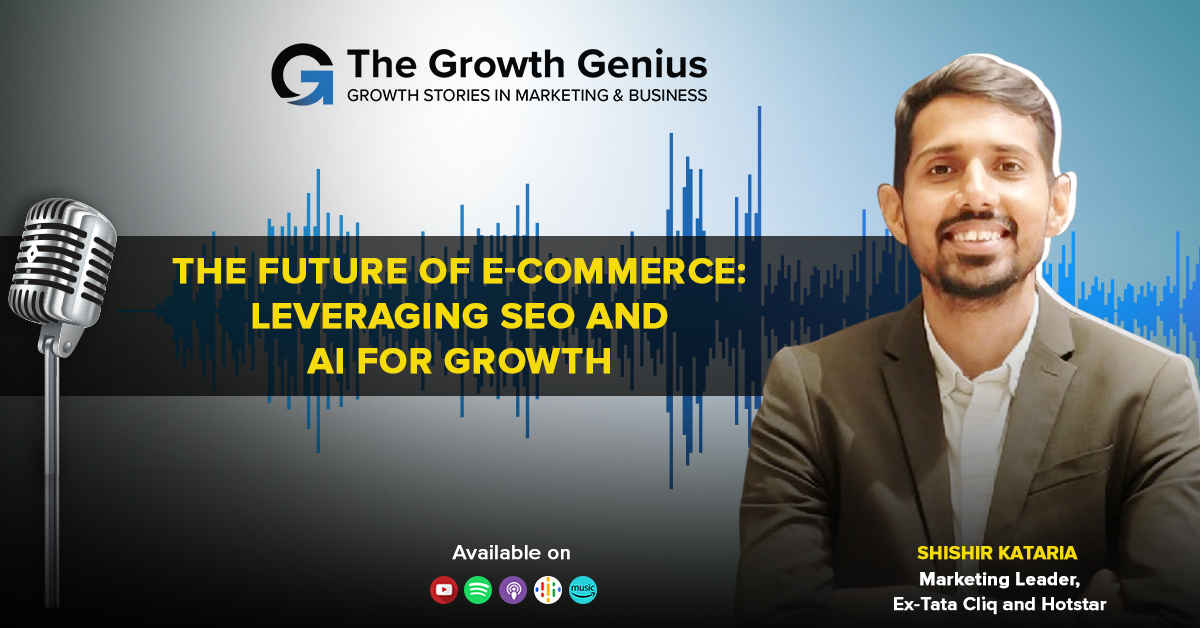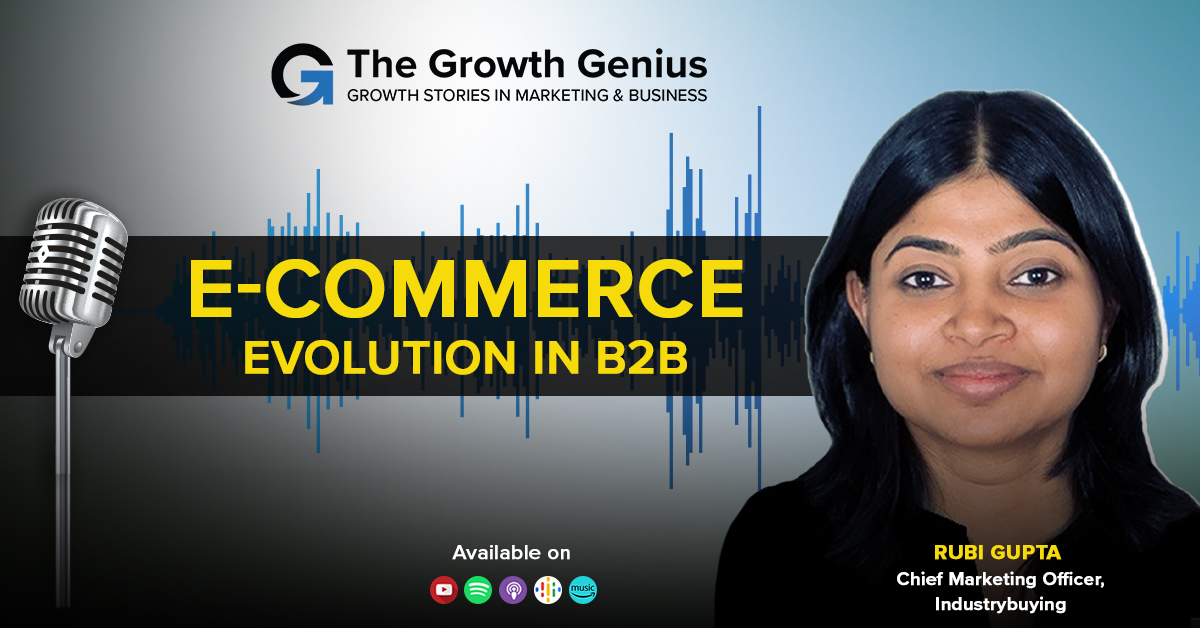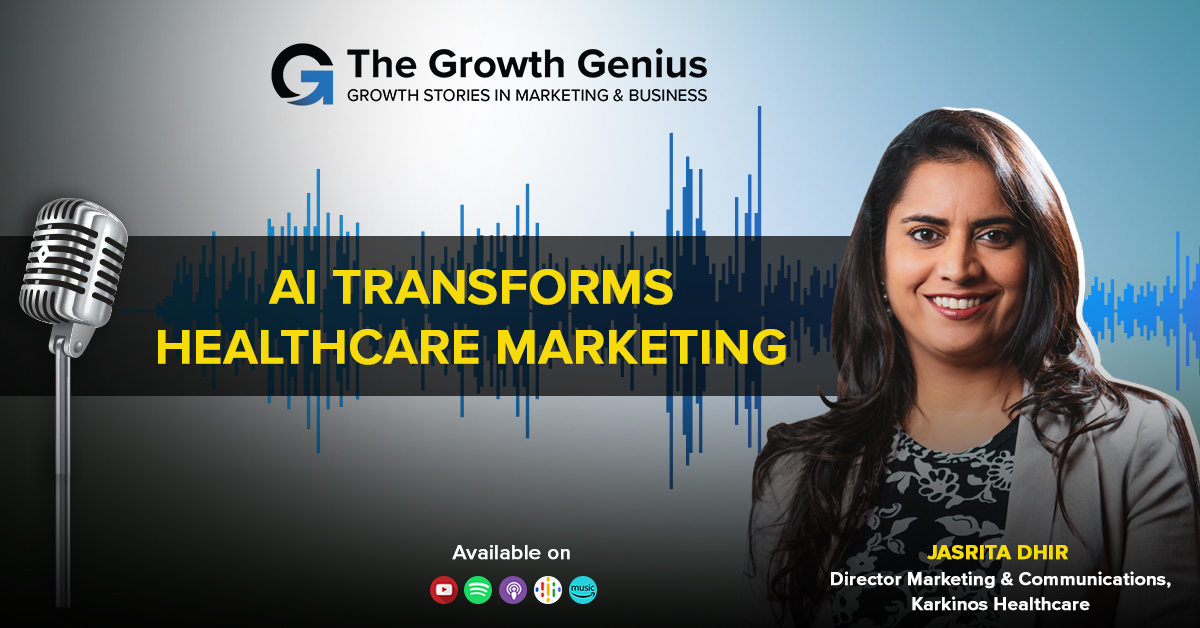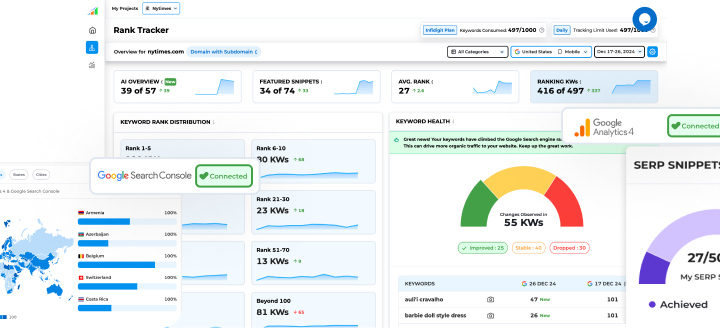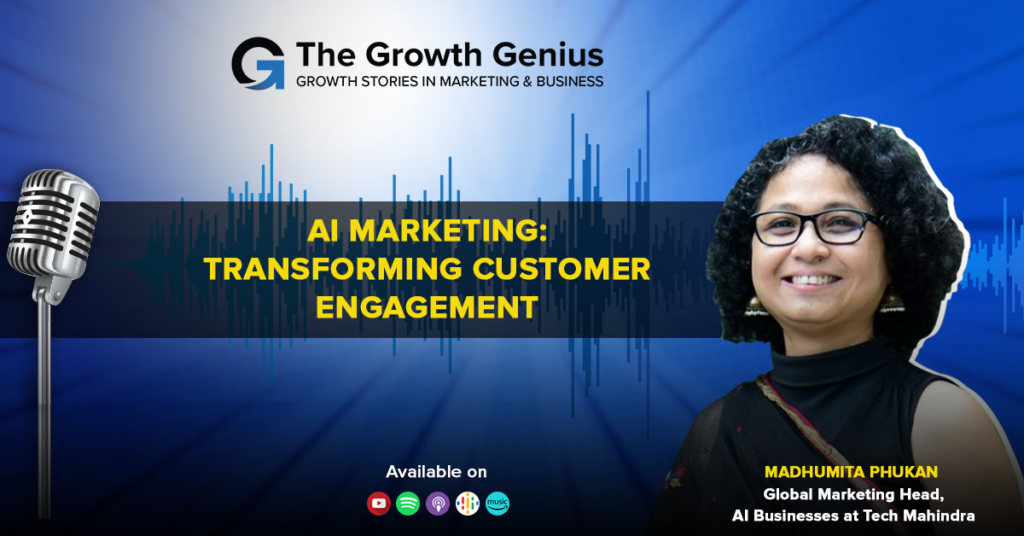Listen on your Podcast app
Summary
The power of AI in marketing alongside influencer marketing and social media influence to craft highly effective advertising strategies. By integrating advanced AI technologies, businesses can enhance performance, boost efficiency, and achieve positive outcomes. However, navigating ethical concerns, biased data sets, and potential risks is crucial to maintain brand reputation and avoid product failures. Instances of AI-generated biases underscore the importance of responsible AI usage. Additionally, inaccurate AI responses to prompts and the spread of misinformation pose challenges. Thus, a comprehensive approach, including data-driven marketing initiatives and integrated storytelling, is essential to harness the full potential of AI while ensuring ethical standards and delivering impactful advertising campaigns.
Key Take Aways
- Leverage AI in Marketing: Utilize advanced AI technologies to enhance marketing performance and efficiency.
- Integrate Influencer Marketing: Incorporate influencer marketing strategies to amplify brand reach and engagement.
- Harness Social Media Influence: Capitalize on social media influence to connect with target audiences and drive conversions.
- Craft Effective Advertising Strategies: Use AI, influencer marketing, and social media influence synergistically to create impactful advertising campaigns.
- Navigate Ethical Concerns: Be mindful of ethical considerations when employing AI technologies to avoid damaging brand reputation.
- Address Biased Data Sets: Ensure data used in AI models is diverse and unbiased to prevent skewed outcomes.
- Mitigate Risks: Stay vigilant against potential risks such as product failures and legal issues associated with AI-generated content.
- Embrace Responsible AI Usage: Emphasize responsible AI usage to mitigate biases, maintain transparency, and uphold ethical standards in marketing practices.
Read Transcript
Madhumita Phukan:- Also from my experience, I would say we should not blindly believe in the content generated by AI, Last important thing I would say, which is really important, in fact, I would say evolving lifestyle. Amul the very next day issued an advisory, again clarifying that the image is fake and unauthorized too. But it was on the, became viral on the social media. It is AI generated. So we’ll have to be very careful from all this kind of misinformation or with malicious intent kind of stuff. Right?
Mehul Ashar:- Hello everyone and welcome to yet another episode of The Growth Genius, the podcast brought to you by Infidigit, the SEO specialists. This is where we bring to you growth stories in marketing and business. Today’s Growth Genius is somebody who started her journey with journalism and then went on to experience media relations, PR and so on. She has amazing experience in the IT domain and today she heads marketing for AI businesses at Tech Mahindra. Please join me in welcoming Ms. Madhumita Phukan who is the global marketing head of AI Businesses in Tech Mahindra. Welcome to the Growth Genius podcast. We are grateful that you could take out some time for us. Thank you so much.
Madhumita:- Thank you so much Mehul for inviting me to be a part of this podcast series. Looking forward to a great conversation.
Mehul:- Likewise, likewise. So let’s begin with the first question. Your designation talks a lot about what you do in terms of marketing and AI, but we would like to obviously know more because the designation itself is very intriguing. So can you tell us more about your current role?
Madhumita:- Sure, that’s a great question as the conversation starter. So let me give a quick background before I talk about my role. I was in science stream till my class twelve and I did my master’s in english literature post graduation in mass Communications, specialized in journalism and then executive certifications in marketing management at digital marketing. And then I started as a journalist in a media house and then moved to the other side to work with PR agencies and then like you know, different corporates. So my education in arts, science, management and then you know, the career side, journalism, PR, Corpcom and marketing all bringing in mix of experiences and communications, right? So in my 20 years of career journey, I’m always trying to bring in an integrated approach by unifying whatever comes under the gamut of marketing, branding, PR and corporate communications. And same way, my current role is an integrated role. I take responsibility of marketing of AI, Gen AI, intelligent automation businesses at Tech Mahindra. And when I say marketing, it is a wide field you know and kind of where different cross functional teams work together towards brand management, PR and corporate communications, product marketing, media relations, demand generation and then other activities like for example You know campaign and event management, advertising, social and digital media, analyst and influencer relationship. You know all these things. You know kind off whatever comes under, as I said, like gametop marketing communications, right? So my primary role is making all these aspects work together as a unified force towards achieving organizational goals or managing business operations or attaining top and bottom line objectives. And that’s by amalgamating creativity or analytical insights or usage of cutting edge technology. And above all you know, all these empowered with powerful strategic planning and execution and, yeah, that’s like kind of my role in brief.
Mehul:- That is probably you know juggling a lot of balls in the air, I would say. Right. And at the same time you know being a common thread across various functions to achieve organizational goals.
Madhumita:- Right.
Mehul:- Yeah, very interesting. So,I mean you know you have been there, done that, and you have seen how things have changed over the past you know few years now. And we wanted to understand your perspective on how consumer needs have changed over time. So if you can throw some light on that, that’ll be wonderful?
Madhumita:- Sure. So I think customer experience is the king for most of the direct to customer businesses. Right. I mean, say like B2C, businesses. Right. So and as we know you know that technology is advancing at a blistering speed and digital transformation is also happening dynamically. Right. And with it, kind of customer expectations are also increasing. So with faster Internet and advanced technologies, customers now have easy access to information or reviews or comparisons. And this leads to higher expectations from product and services and overall you know the brands. Right. So if you want to buy a mobile phone or a tv from Amazon, for example. Right. So you will look at the reviews, do comparisons, and then you take the decision, isn’t it? And of course you will expect fast turnaround time also if you have any kind of query. Right. So these kind of things are happening. I mean lots of things are changing with the time now, these days. So what are the main results for changing or increasing customer demands? Right. So the first one is rapid technological progress, I would say. So what technology is doing? So it is essentially improving the standard of services provided by the companies and enhancing the customers convenience level, what I think. So 59% of consumers expect responses from a bot in 5 seconds. Isn’t that crazy? So it’s like this kind of expectations is kind of happening. And a study says that AI will empower 95% of customer interactions by 2025. So this leads to the second reason again, for changing or increasing customer demand. And that’s the competitive market, I would say. So. Intense competition among different companies drives them to constantly innovate and you know offer better products and services. Right. And setting higher you know benchmarks for customer experience. So look at the services of Blinkit or Swiggy or dunzo for an instance. So customers can conveniently get the kind of base services sitting at home like people, like us, in fact. So I personally love to do the experiment and this kind of services. So yesterday I ordered from Blinkit and also from Swiggy almost the same time and Blinkit delivered in 14 minutes and swiggy in 20 minutes. So I just keep kind of experimenting all the things so competitive services you know delivered in competitive timelines, I would say, or time frame. So another important reason is like social media influence. So close to like 5 billion people are on social media this day, right? Globally, which is like more than 60% of the world population. So customers share their experiences widely on social media. People like us again, so influencing others, forcing different companies to meet the rising demands, in fact. So if you have a complaint, you won’t have to go far, right? So you just open the Twitter account or LinkedIn account or Facebook account, you just kind of write there and I’m sure you’ll just get a very instant reply from your customers these days. So these kind of things, I can see there are lots of changing demands and all these things from the customers, as well as just service improvement from the other side. So another very important thing, Mehul, I think, is the access to information, right? So as I mentioned earlier, so very interestingly, like, over 90% of people read reviews Before making any purchasing decision. So as customers now you know, kind of, they have access to information, reviews, comparisons, as I said earlier. Right? And this is again happening everywhere. And the last important thing I would say, which is really important, in fact, I would say evolving lifestyle. Yeah. And as lifestyle changes and customers look for tailored or personalized solutions, Right so, Those personalized or hyper personalized solutions can fit their unique needs, right. And pushing businesses to adapt or excel in meeting diversified demands. So all these are making towards increasing customer demands, what I think, and we all marketeers are working towards making our customers happy.
Mehul:- Yeah, I think if we look at it today, the expectations have skyrocketed. Like you mentioned, the time of hyper delivery, we are expecting things to be delivered in minutes now where we used to, had to go out earlier and spend, let’s say an hour or so, but now it is all getting delivered. And somewhere, obviously, AI is becoming the support or the backbone, so to speak, to meet customer demands in that sense, because otherwise it is not possible to cater to that scale of customer demand. So to say, maybe Swiggy may be getting so many orders in a minute. I think AI plays a very important, very important role.
Madhumita:- Yes. Now with the advent of gen AI , it’s like expectation is increasing. In fact, I would say.
Mehul:- Very true. And what about advertising? Because a lot has changed in the digital age as far as advertising is concerned. So what are your thoughts in terms of the benefits or pitfalls of advertising in the digital age, so to say
Madhumita:- Very interesting question, Mehul. In fact, I would say so almost every day, an average person is exposed to around 300 to 350 advertisements. I read somewhere. So I think some analysts mentioned about it. So just imagine kind of 300 to 350 advertisements we general people just kind of generally kind of have exposed to. And these advertisements beat like kind of digital print, electronic, or a holding or outdoor anything, right? A mixture of all, in fact. So we can say advertising significantly influences consumer behavior and it pervits all parts of our lives, right? So we use things influenced by advertising almost every day, right? So like for example, the toothpaste or maybe just different food items or travel destinations these days, right? Or different clothing. So not now. It’s like actually from our childhood, maybe idioms were very less during that time, but of course we were really influenced, I believe, right? So how advertising is changing in the digital age? So first thing, I believe it’s technology. Technology is the primary reason for the change, I think so, to a large extent. So advertising’s impact on people’s life is based on its ability to affect their intent or the emotions. So for example, mobile phones are increasing their capabilities, right? So now you won’t have to carry DSLR for your travel, or you can do your office mailing or designing or video editing again in your mobile phone, right? So shopping places are on the digital screen, either on the laptop or iPad or just no kind of mobile phone anywhere. From anywhere you can do the shopping. So it’s like kind of advertising agencies now target customers according to their taste or place or age, You know, fairly conveniently,you know targeting on the different devices also. So this kind of changes happening again in the advertising world. Second thing is you know using the data analytics, right? So this is again very important, I believe. So marketeers can now collect or analyze information about the target audience, such as their preferences, like behaviors, purchasing patterns, et cetera, et cetera, right? So technology like data analytics or AI as we discuss, right? So AI help in customer segmentation according to demography, geography, taste, intention or emotions. All these things and all these help marketeers in bringing personalization, In fact, hyper personalization, I would say, in campaigns. So according to the segmentations, once we do the segmentation of the data, right? So marketeers can message or just connect with the target audience at their optimal time. That is also very important, right? So what time we should connect with this target audience? This is like kind of we can do through our analytics. So also kind of AI and intelligent automation work to automate different organizational processes to save time and money for the businesses. For example, this email, you know, amplifications, right? So what they can do or through AI, through different solutions, what they can do, they can get back to the customers 24×7 anytime. And they can, according to their intent, reading and or just no kind of sometimes bringing the human in loop also so they can automate the whole email processes, right. Responding the different customer queries and et cetera. So those kind of things can be really important for marketeers to increase the customer demands or customer experiences. So another important contribution for the advertising trends is the popularity or like, you know,kind of usability of smartphones and other portable devices, IPD, right? So now all these make it easier for companies to market their products, as I mentioned before, market their products or services to consumers that target consumers wherever those consumers happen to be. So a study found that 77% of shoppers use a mobile device to search for products. 80% of the Internet users make online purchase at least once. And the 50% of gen Zers, millennials and gen Xers in fact make their purchase on their smartphones. These are really important thing, I believe. And apart from that, another important aspect is, as I mentioned earlier, also that is the social media platforms. So they are bringing again the revolution, right. To the advertising agencies. So like for example, Instagram or YouTube are extremely popular medium, right? So through which we see different advertisements regularly and then in fact, we frequently make decision based on marketing trends such as where to have coffee, where to buy dinner, or which phone or sneakers to get as per the trends and where to go for the new year or kind of different occasions. Yeah. So advantages of disc in the digital marketing or social marketing help in increased reach, I would say targeted audience engagement, then measurable results and cost effectiveness. So these are of course important one, but above all, I believe the storytelling and that’s come from the content, right? So content is the another important aspect which like you know kind of bring this revolution into this advertising agency. And that’s where this generative AI is contributing tremendously, right? Like for example, the chatgpt, almost everybody probably use chatgpt in these advertising agencies these days, right? So Gen.AI is used to kind of create ads that are really engaging or visually more pleasing kind of stuff, right? And for example, I would take one example that is like coke, right? So Coke has created a beautiful advertisement using gen.ai, which brought life to all the evergreen world famous paintings, right? So that is a really beautiful ad. I would say by using AI for ad creative, the businesses can ensure that their ads stand out from the competition and are more likely to generate clicks and obviously like conversions. So, yeah, so those kind of things, really important aspects in changing advertising and marketing or advertising scenario.
Mehul:- And what do you think can be the pitfalls here, because we understand there are various platforms and devices. And to top it, the important part, as you rightly mentioned, is the content or the input that goes through these channels or devices, so to say, which actually creates the magic. Right. But what is the other side of this? What is the flip side, according to you
Madhumita:- Yeah, I think, I can’t say this is like a pitfall or it’s a negative because it has brought us lots of advantages. Right. So advertising is, for me, our information, in a very crisper way. Right. So only one thing is notable that is like, as the crowd of the advertisements becoming denser. Right. So I would not say that mushrooming, but it is kind of really increasing because of this technology or because of the other aspects. The number of advertisements are increasing, of course. And that’s like, it’s becoming tougher or difficult for consumers to choose. Right. For people like us, if we see this kind of different mobile phones, different brands and all these things. Right. And the similar features, functionalities. Right. So it becomes very difficult for us, like consumers sometimes to choose the best ones. So I think that is the only thing to differentiate and attracting the eyeballs of these people. Maximum eyeballs of the consumers. Right. So that is the most important role and important aspect where I think advertising agencies should look at the next. Yeah. So it’s not a pitfall or something, or negative. It is like kind of, it’s actually becoming difficult for these consumers to just kind of decide. Yeah.
Mehul:- Right. Right. And having said that, in these changing times in marketing, we are seeing a lot of change in marketing happen over a period of few years. Now. How do you build a brand in the digital space? What are your thoughts on that
Madhumita:- Yes, mehul. So I believe marketeers play extremely important role in helping businesses out think or outplay. Also outshine competitors. Right. By infusing right brain activities with left brain potentials. So many rights play together here, right. Planning in right time with right people and right partners, and above all, in this digital age, use right technologies and do the right investments. Right. So one of the important aspects is storytelling, according to me, as I said earlier, of course, this is not a new thing, but this is now taking the driving seat. To accelerate speed in this digital age, creating the personalized or interesting content faster by using AI tools is extremely important. Right. For example, different generations should be targeted different way for Gen Z short form videos like bring more engagement or. 53% users in Instagram are above 30. Right. They should be addressed differently. So I think to target all this kind of audience storytelling is extremely important, right? So in case of content in the past, we had to brainstorm for hours and hours, right, for creative ideas, if you can recall. So switch on the imaginative or inventive or artistic mode of ours to write singles or do copywriting or writing articles. Again, it was time taking because we had to read so many reports. We. Had to just talk to different experts to know their opinions. And also after kind of getting all this information, validate also from different sources and take decisions on intuitions and all. And so much things happened, right? And now what? I mean, now it is completely different. We can write a jingle in a few seconds. You just need to give the prompt into the chat gpt or similar platforms, and we can get many options of kind of creating jingles on the same topic, right? So we can get three, four, five different jingles on the same topic. So we can get an image of our wild imagination again with a prompt or just a few instructions, kind of. We can write a blog or get an image, we can create our landing pages, product descriptions, or get an statistic of an industry, right? So it’s, again, not kind of hours or hours or something like that. So it’s a few seconds or few minutes kind of stuff, right? So according to me, we need to utilize the advantages the technology brings in. So it is extremely important for marketers to understand their target audience better than before, right? So as I mentioned earlier, the competition So as I mentioned earlier, the competition So as I mentioned earlier, the competition is increasing, consumer behavior is kind of changing, customer expectations are increasing. So targeted and personalized campaigns are playing vital roles again in building the brand. So using data analytics or other new edge technologies like AI, gen, AI, intelligence, automation, we should do proper segregation of the target audience and do the targeted campaign. This is another thing. And besides, like I would say, putting the human interest first. So this is, again, it can play as a distinguishing kind of aspect of all successful business, I would say. And that’s becoming very important differentiator in this digital age. For marketeers, personalization and quick responses are becoming extremely important factors. As I mentioned earlier, I think this technology is playing very significant role. Like for example, the chat bot and automated emails. This according to intent for the customers. This again plays a huge role in case of SEO, or I would say not only seos, in fact I would say SEO keywords, competitive analysis, keep track of analyst ratings, reviews. Then I would say regular presence in social media, establishing yourself as a thought leadership, consistent messaging, then feedbacks from sales team and accordingly just kind of creating campaigns according to the sales people’s kind of feedbacks and all. And then intent reading of the customers and then utilizing new age knowledges as much as possible. All these play the game, actually. And basically like 360 degree integrated approach can help us build a strong brand in the digital space. What I take, especially for the marketeers.
Mehul:- So I mean, rightly said, and if I probably summarize this, obviously you have the technology part, but you also spoke about the human element and that is where you have storytelling, which actually touches the heart of the customer, and that is where you try and build a brand by doing various activities, right? So coming to storytelling, I also want to understand about storytellers. So those are the influencers. As such, what are your insights on the role of influencers in today’s age of marketing
Madhumita:- So, influencer marketing is very important and very interesting, in fact. So I think influencer marketing is like word of mouth advertising, but again, it’s a much larger scale, right? So almost like 25% of brands worldwide put ten to 20% of their marketing budget towards influencer marketing. So brands are expected to spend almost like kind of close to $8 billion on influencer marketing domestically in 2024. So very interestingly, there are more than 64 million influencers accounts on Instagram all over the world, right? And 77% of Instagram influencers making money worldwide are women, in fact. Right? So there are many aspects which advocate influencer marketing. So first is like kind of, of course, very important. This is trust factor. So when influencers talk about a product or service or solution, right? So it feels trustworthy, right? So it’s not just a company saying their product is great, but it’s somebody else or someone just know you like or trust is saying it. So 69% of consumers trust influencers recommendations, according to some study. So real people, real impact, right? So influencers are just regular people like us, right, who became famous on social media, and they connect with their followers on personal level, right? So when they promote a product, it feels like a friend recommending something cool kind of stuff, right? Yeah. So that’s another thing. And then targeted audience. So influencers often have a very specific niche or theme for their content, right? So this means that when a brand partners with an influencer, they are reaching a pre qualified or interested audience. So again, this leds to the another thing again, which is like no social proof, right? So seeing others use or kind of enjoy a product, so that encourages people to try it themselves, right? So influencers provide social proof also, and by showcasing the benefits and the positive experiences associated with particular brand or product. So apart from that, I believe the influencers are really skilled content creators. Most of the, again, I would say not all, not all influencers, but most of the influencers. So their ability to produce very engaging or diverse content, right? So from photos to videos or just stories. And this helps keep the marketing campaigns fresh and engaging with their diversified content kind of stuff. Right. Influencers, they have massive kind of followings, right? So followers kind of stuff. So sometimes in millions or sometimes in billions also. So collaborating with them allows the brands to tap into this extensive network, I would say expanding their reach far beyond traditional advertising methods also, and above all, which is like really important one, that’s, I think the cost effectiveness. So compared to traditional advertising, the influencer marketing can be more cost effective, right? So like, for example, the brands can achieve impressive results with a well planned influencer campaign. Often, generally happens like at a fraction of the cost of a traditional ad. So I think in case of influencer platforms, the most important one, what I would say that Instagram, Instagram is the number one influencer marketing platform. And then I think YouTube comes in the second and then Facebook.
Mehul:- Yeah, that’s very interesting because the user case that an influencer talks about actually is close to home as compared to any advertisement talking about the product. So it is more relatable, acceptable as well. Like you rightly said, not all influencers, but most of them today have been able to strike that chord with the.
Madhumita:- That’s right, yeah.
Mehul:- So they play an important role today in the marketing machinery. So to say. Having said that, we would also want to understand your perspective on the importance of organic search in building and growing a brand?
Madhumita:- So organizational goals generally include creating brand awareness, building credibility or trust, educating audiences, right. And then building loyalty with the existing clients or customers and generating demands or leads, right? So I think the website is almost the first thing which makes the lasting impression, right? So we marketers always try to bring our target audience to the website. Maximum traffic, if we can bring, that is our achievement, right? So trackable website traffic, 53% comes from organic search, according to some studies over the coming years, like, 45% of marketeers plan to work on website optimization to improve digital consumer experience, right? So writing high quality content with hyperlinks or backlinks is also very important. So they attract interest and compels visitors to share it. Links and kind of link back to the websites kind of stuff, right? So good content has the best chance of being viral content, I would say. And Google rewards content like virality heavily, in fact, in its ranking algorithm, right? So this is really important to deep dive a bit. We know the three types of search keywords, right? One is like informational, second one is navigational and third one is the transactional. So they clarify the intent of the search. I mean search arts, right? So intent is one of the most variables I think in lead generation and sales and prospect is searching for the information or comparing the brands or evaluating a product. All customer journeys begin or progress or intent. So it is easy to dig into organic traffic analytics and match keywords with intent. So done correctly, we can get an exact idea of how far the visitors have come along with the buyer’s journey. So when combining SEO, blog post or the landing page copy with compelling cts, that makes a 47% of contribution to increasing sales. That citing and this add like epitome lead intelligence to that kind of. And you have an unstoppable sales machine. I think with all this kind of seos or blog post or this kind of content and intent mapping keywords and all these things.
Mehul:- Very interesting. And obviously I have to ask you on your take on AI in marketing, what are your thoughts on that
Madhumita:- Very close to my heart topic now? Yeah. So I think AI is no longer futuristic concept or a niche technology, right? So it is a reality now that is transforming every industry and every aspect of our lives. So AI has been touching almost every household these days in shape of apps or tools like Alexa or Siri cleaning robo or kind of astronaut robo or fridge alarm also and so on, so forth, right? So until now, I think AI was demonstrating its capability in prediction or predicting, detecting, recommending and observing, right? And with generative AI from the last year. So AI, it can now create along with all this whatever I say, and thus kind of making AI further disruptive. So I think Gen AI is bringing renaissance to the creator economy and it has tremendous potential, right? So AI tools writes like Shakespeare right? Or the poets like Shakespeare or John Dunn, and then kind of paint our imaginations like whatever we say, they can paint it or create plans for us, create presentation for us, advertisements for us, automate different kind of processes, whatnot, right? So all these things can do now. So that’s generative AI is all about, right? It’s like having a creative genie in a bottle. At Tech Mahindra, we call it like with Gen AI, code creators, content creators and response creators experiencing disruptions while product design creators and process creators and knowledge creators are so. And at Tech Mahindra, we are just kind of fully investing in this duality and we help different kind of customers to infuse gen AI in every aspect of businesses, I mean, democratizing it responsibly. So having said that, almost like 3.5 quintillion bytes of data is created every day, right? So I will take few numbers. In fact, 330,000,000,000 emails are sent out every day, right? 500 million tweets are created every day again, right? And then, like, youtubers upload more than 500 hours of content every minute. So Google processes like 99,000 searches every second. So with this kind of humongous amount of data and increasing customer expectations, right, how marketers communicate or engage or just kind of captivate their audiences, so how we as a marketer are setting or adapting it or riding in this wave of change. So that needs the maximum attention. Now, AI marketing kind of includes different kind of various use cases. Like for example, as I mentioned, some of them like data analysis, like content generation, media buying, real time personalization, and most important one, which is like decision making, right? So assisting businesses in deciding which marketing or business growth strategies to employ based on historic data or external data inputs, right? That also plays a huge game in the whole journey of marketeers and the businessesa also.
Mehul:- Very interesting, some very astonishing numbers, I would say that you shared now, but in your experience, Madhumita, how reliable are these AI tools and what are your experiences when using these tools?
Madhumita:- This is a really really important question. In fact, while AI can improve performance, boost efficiency, or generate positive business outcomes, brands are also experiencing very unexpected consequences of its applications, right? So this can kind of stem from lack of research or very biased data sets. So AI and misuse or neglecting ethical concerns can result like in a damaged brand reputation or maybe just kind of product failures, litigations and regulatory issues and et cetera, et cetera, right? So very important thing is the AI tools depend on many factors, which includes, like, for example, the purpose of the tool or the quality of the data used to train the AI model and the potential risk associated with the use of the tool. So ethical concerns can include, like, for example, this false content generation, explainability, or maybe just societal impact bias, data responsibility and privacy, fairness, transparency, environmental sustainability and et cetera. So trust, accountability, et cetera, et cetera, right? All these things. So concerns around this data privacy, protection and security, these are kind of our top of the mind of different brands, different organizations, not only the brands, but the service providers also. Secondly, I would say AI tools learn from different data, right? As I said, so a poorly constructed or poorly kind of trained AI can demonstrate bias against the data. So if the input data is, if it is like biased, then obviously output will be also kind of. It can be influenced by those kind of biased ones, right? So there have been several large cases, in fact, or bias with AI generated artwork, chat bots, facial recognition software, algorithm, and even for hiring practices also. So we know them, right. So many instances happen. So I’m not sure if you just kind of followed on this one, several kind of TikTok and Twitter users called out thread featuring hashtag South Sudan Barbie, right, which adorned life with guns. And it’s a negative stereotype associated with a. So, you know, grappling with sociopolitical issues such as genocide or refusee crisis and et cetera. So another example, very recent one, Zara, the jacket campaign. Right? So that is another example. So people just kind of related it to the war, the israelite Hamas war, and called it insensitives, right? So though they just used their advisory, but they had to just take down this advertisement down. Right. So this kind of biases also will have to kind of be very careful about just kind of using all these things, all this kind of information. So another thing is similar. One, it’s like sometimes AI responses to the prompt. Not sometimes, all the time. There’s kind of AI responses to the prompts on the different platforms, right? So this, if inaccurate prompts, it can just not, the responses can be inaccurate also. And there are chances of people spreading misinformation with malicious intent kind of stuff. Right. For example, very recent, again, another example that is AI generated image, Amul Sharam. that is AI generated image, Amul Sharam. I am not sure if you followed on that. Amul Sharam cheese became viral in various social media platforms very recently. And Amul the very next day issued an advisory, again clarifying that the image is fake and unauthorized too. But it was on the, became viral on the social media. It is AI generated. So we’ll have to be very careful from all this kind of misinformation or with malicious intent kind of stuff. Right? So yeah, this is another one. And then also from my experience, I And then also from my experience, I And then also from my experience, I And then also from my experience, I would say we should not blindly believe in the content generated by AI, right? in the content generated by AI, right? Of course, humans take time to produce ideas or write content. The AI tools can do the job in a very few seconds. But it doesn’t mean to leave the content as it is. As humans or marketeers, we need to review that. This is extremely important to review before just publishing or forwarding to the next level. Apart from that, I think the companies like tech, Mahindra, or maybe just kind of Google or maybe Microsoft or IBM or many other organizations or industry associations, all are hugely focusing on this responsible AI, right. So privacy, security, copyright, ethical AI investment are increasingly priority for all kinds of businesses. And as personalization becomes more popular, brands are implementing the best practices for collecting, storing and analyzing the data to protect customers and organizations. So we can say overall responsible marketing is the thing for us also for the all marketeers, which is in the extremely important for the world also. yeah.
Mehul:- Very well said. And I obviously want to ask you about do you use AI in your marketing activities and can you share a few examples for us
Madhumita:- Yes, I do. So I use different AI tools for content creation, intent analysis like customer segmentation, customer support, after sales supports and many other activities. In fact, I use AI hugely. And at Tech Mahindra we have generative AI studio which is like a virtual experimentation space which enables enterprises to generate code, text, image, data, audio, video and with kind of almost like more than ten model shamaris and 50 plus pre built Gen AI capabilities, right? So we have a solution called email amplifier which is again powered by Gen AI and it enhances organizational efficiency or customer experience with quick, accurate and automated responses. And it also helps in kind of personalization at scale. It says kind of create very compelling and visually appending kind of content and it provides like end to end solution for all email automation, starting from the receiving the emails, as I said, like kind of identifying customer intent, extracting required entities from emails, gathering required information from different systems, like for example CRM finance or enterprise systems, et cetera, using automation program, then kind of generating automatic response using templates and sending the mail to the customers. So this is one and another very important thing is like our after sales services to manage the lifecycle of the aftermarket operations and extended after sales services. So we are bringing almost like 50% to 60% more productivity overall in that sense. So this kind of few examples and how we are using AI.
Mehul:- Thanks for sharing that, Madhumita. So basically the question here is marketplaces today play a very important role in the e commerce industry per se. So what is your take on their importance? And are there any pitfalls to it.
Madhumita:- I think, you know, the marketplaces, like for example, I would say Amazon or maybe just Walmart owned Flipkart, they dominate online sales, right? But new entrants like for example reliance Retail or Geomart and Tata Digital or different startups like for example the Nykaa, Meesho, Uran and Dealshare, all these are making things very interesting these days, right in this space. Also the government backed the platform ONDC, which is like an open network for digital commerce. And this is also just creating a level playing field for these e commerce giants and small offline traders that are running local kirana shops and all these things which actually just form the backbone of the indian retail system. I think the giants like Amazon and Flipkart, they have been able to pull the merchants or the buyers to their platform due to their tried and tested technologies and all these things. Right. And technology plays a very important role as kind of we discussed earlier also. So in my opinion, e commerce spaces right now is to wait and watch how it goes. yeah.
Mehul:- We come to the last segment of the podcast Madhumita. Thanks for keeping it going today in spite of your bad throat. So we would like to know any growth stories that come on top of your mind that you would like to share with our audience. That’ll be great.
Madhumita:- Plenty of them. Yeah. As marketing and communication team, we do many campaigns, both overall organization level and business units, in fact, each year, each month. Right. So many are successful and many are not successful. Right. From where we learn a lot. So as you ask me to single out any specific campaign. So I would love to just kind of mention about a campaign which is called like call for code, right. So while I was in IBM, so I got involved in this call for code campaign. So this is a very interesting flagship event initiated by IBM along with David Clark cause and United nations human rights. So IBM runs it globally and locally. And in this campaign what happens is kind of IBM invited developers or problem solvers to build solutions to mitigate different pressing issues of the society. Till the previous year, almost like 400,000 developers participated and contributed almost like 15,000 plus ideas across 179 countries. In 2020, there were two themes. One was like kind of climate change, another one was pandemic. Right? So I, along with my colleagues took the responsibility to run the campaign in India, South Asia, also giving a 360 degree perspective. And it was an integrated campaign internally for our own practitioners and externally for developers of the country. And third one is for the university level. So we worked with cross functional teams like CSR team, technical experts council, university relations and talent branding team, and then developer advocacy team and then PR agency and also our different leadership team, right? So we organized many things like for example, virtual hackathon meetups, media interaction, social media, digital media, digital media with SEO, keywords, mailers, different promotional contest and then kind of virtual teamwork and et cetera, et cetera for promoting the event. And very interestingly, we received almost like approximately like 50% more resistation that year than the previous year. So I think it was a great achievement. This is a very good example of, I would say, success of a marketing campaign. And similarly, I would say about kind of tech Mahindra, there are many growth stories. In fact, we have. One is about generative AI studio. So yes, and we are an early adopter of generative AI. And in fact, we were first to launch generative AI studio for experimentation when others were just waking up and to see the impact of it. So we did very integrated campaigns around promoting the Gen AI studio and received very much like kind of positive results out of it. These are two instances infact.
Mehul:- Quite interesting. The last question on this podcast. So we would like you to share four key takeaways for budding professionals
Madhumita:- Sure. So first of all, I would urge all budding marketeers to work towards understanding as in depth as possible what you are promoting or what you are selling, right? So until, unless you do not understand your product or solutions or services, you won’t be able to do justice to the job. So this is the itinerary. First advice I will give to all these budding marketers. Second is storytelling. Right? So content is always the king, and our story should be inspired by empathy and aligned with the intent of the target audience and the customers. So we’ll have to have a very good content when we do the storytelling. Right? And the third one, I would say all the marketing initiatives should be data driven and well measured. Right? And the fourth one, I would say we should fully utilize the power or the potential of the newest technologies in a right manner at the right time. And above all, I think extremely important, which is like overarching. That is like integrated marketing. Right? So because marketing is a very wide field and it is very important for all the marketeers to put a 360 degree focus into it to get the best out of it. Yeah. These are my suggestions to the budding marketeers.
Mehul:- Wonderful. Thank you so much for summing that up in a very nice way. Madhumita. I think these are nuggets of wisdom which the audience would definitely love when the podcast is published. So thanks a lot for that. And once again, thank you for coming on the show and sharing your wisdom with us. For the viewers of the podcast, that is the growth genius powered by infidigit. Thanks a lot and get well soon, I would say.
Madhumita:- Thank you so much. Thank you so much for inviting me to be a part of this podcast. Once again, it was like questions were really nice. I love the questions. In fact, thank you. This information are really important, as I just kind of mentioned about this responsible marketing, the importance of using this kind of the technologies right, new gen technologies in our whole marketing journey and also putting the human first right. So those things are really important, I believe. Thank you so much for giving me this opportunity to be a part of it. Thank you, Mehul.
Mehul:- Pleasure. Pleasure is ours. Ladies and gentlemen, here we come to the end of yet another exciting episode of the growth genius. Obviously, it was very inspiring for me where we talked about AI in marketing and other spaces as well. Madhumita shared a lot of insights in terms of how AI is used, how we need to look at AI as a tool, and how we also need to look at what are the pitfalls of using AI in today’s age. And these insights help us in enabling our roles and improvising on what we do. So if these podcasts inspire you, do share, like and subscribe as we are available on all social media platforms and also audio platforms. The links to all of these are shared in the descriptor for you. So till the next episode of the growth genius, keep learning, keep inspiring. Thank you.

Popular Searches
How useful was this post?
0 / 5. 0


